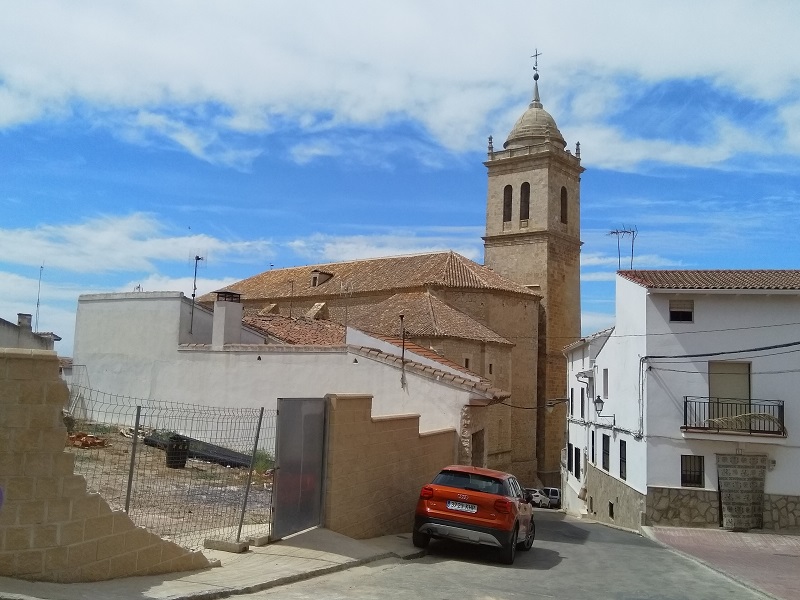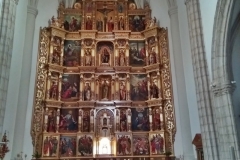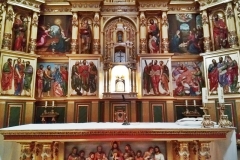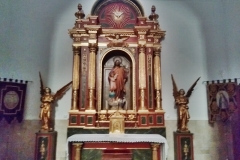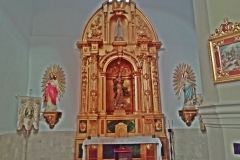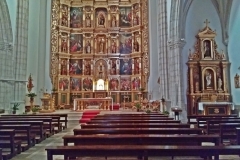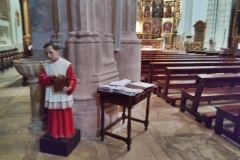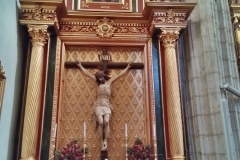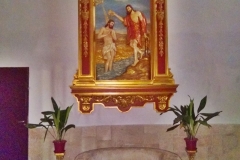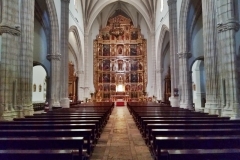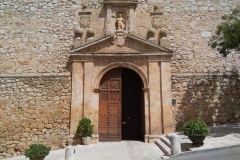The Iglesia de Santa María Magdalena (Church of St. Mary Magdalena) in Mondéjar was built in the early 16th century and became a National monument in 1931. It’s one of the main tourist attractions in Mondéjar, Spain so, if you are visiting the town, it’s one of the places you may want to see. To be honest, the church is located next to the town square (Plaza Mayor) [MAP] so it’s pretty hard to miss. The Iglesia de Santa María Magdalena is also one of the few tourist attractions in Mondéjar that’s easy to get inside. It has two main doors, one at the front and another at the side. Both doors are generally open throughout the day.
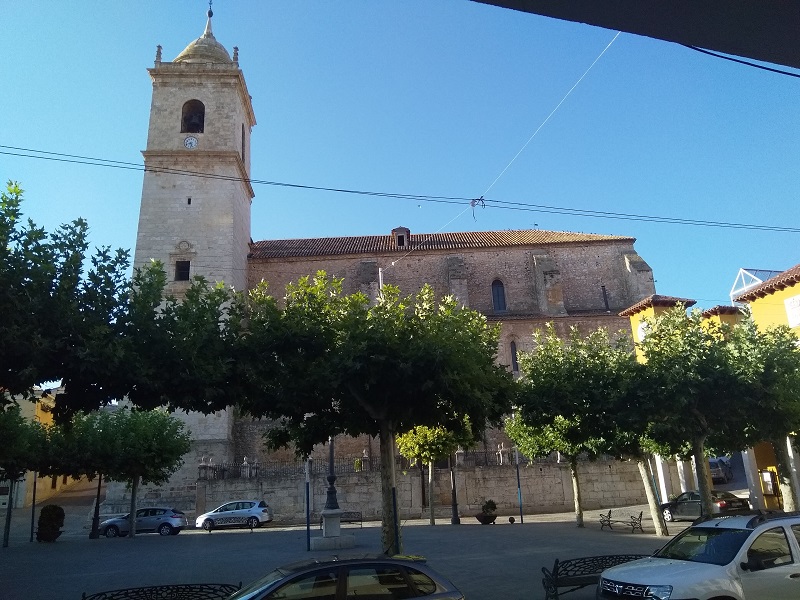
History of the Iglesia de Santa María Magdalena
The church was designed by the architect Cristóbal de Adonza and construction began in 1516. The project was funded by the second Marquis of Mondéjar, Luis Hurtado de Mendoza.
Unfortunately, I haven’t been able to find out when the work was completed. There’s no information online in English and very little in Spanish.
However, I was able to discover the present altarpiece is not original. The original was the result of the combined talents of the Spanish architect and sculptor Alonso de Covarrubias and Juan Correa de Vivar, who is considered one of the greatest Spanish Renaissance painters. Unfortunately, there seems to be some confusion about how long it took them make the altarpiece. Some sources state five years, others state 10. All sources agree it was completed in 1560. Unfortunately, it was destroyed during the first year of the Spanish Civil War (1936 – 1939).
On a side note, the original bullfighting ring at the nearby Plaza de Toros was destroyed at the end of the Spanish Civil War. So that’s two objects of cultural significance lost within just a few years.
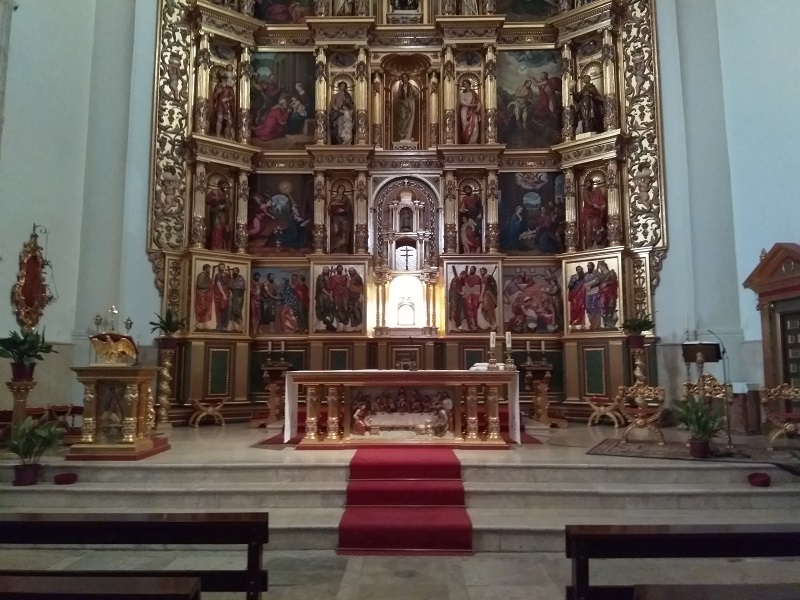
The altarpiece at the Iglesia de Santa María Magdalena was replaced by an exact copy at the end of the 20th Century. The work was carried out at the workshops of Artemartinez. At his point, the Iglesia de Santa María Magdalena was already a national monument and had been for several decades.
Some websites that state the church achieved monument status in 1921. Others say it was 10 years later. The latter is correct. According to the Spanish Government website, the declaration was made on June 3, 1931.
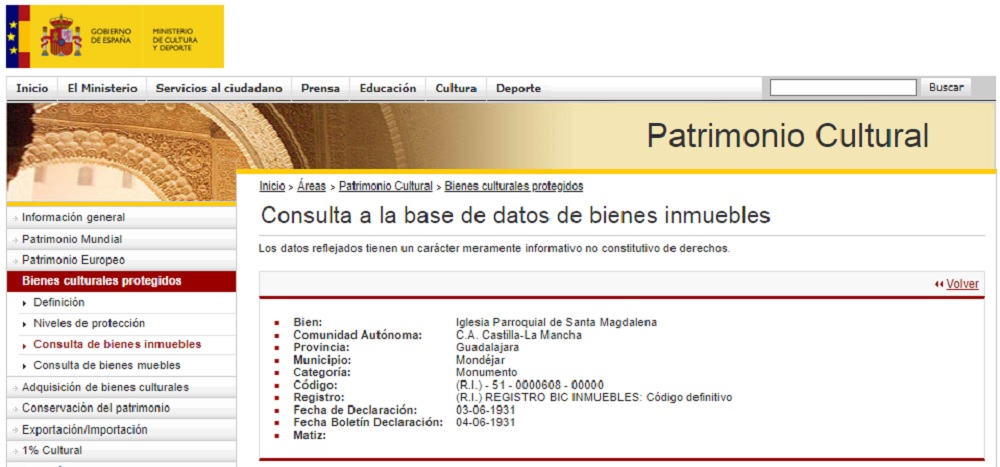
Pictures of the Iglesia de Santa María Magdalena (Inside and Out)
My Opinion of Mondéjar’s Parochial Church
From the outside, the Iglesia de Santa María Magdalena is not as impressive as some of the other places of worship I’ve encountered on my travels, but there’s something about its appearance that appeals to me. When I’ go upstairs to the kitchen in the house that I’m presently living in I can see the steeple over the rooftops. It’s easily the tallest building in the town and the steeple looks especially nice when it’s lit up and highlighted against the night sky.
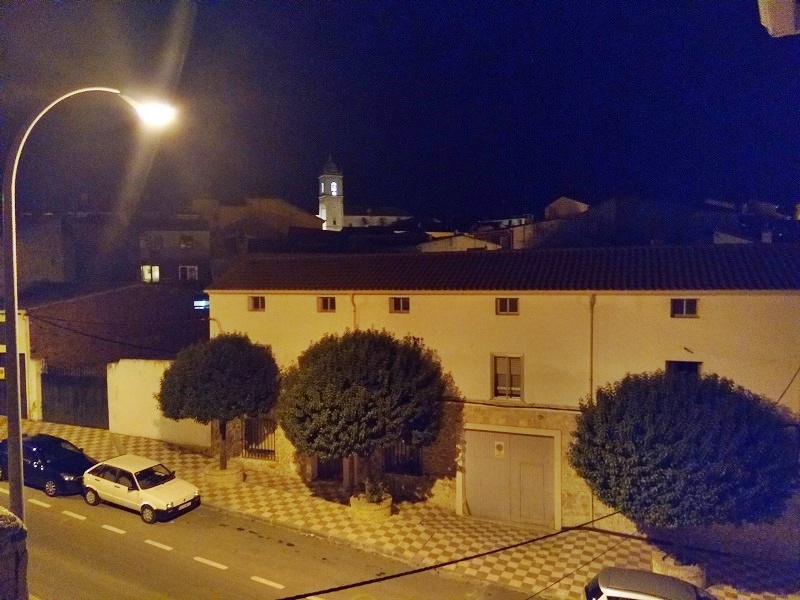
I was slightly curious to see inside so popped in one day when I out walking. I’m not an expert on churches but, to me, the Church of Santa María Magdalena isn’t much different from the old churches in Britain. However, old churches in Britain tend to have stained glass windows behind the altar. The Iglesia de Santa María Magdalena in Mondéjar does not. Behind the altar is where the altarpiece goes. It may not be the original item, but it’s still very impressive. The people who made the replacement did an excellent job.
However, for me, taking a look inside The Iglesia de Santa María Magdalena was mildly interesting at best. It’s fair to say the experience did not blow me away. I much prefer the Ermita de San Sabastían. It’s a place I’ve visited several times during my time in Mondéjar. The Ermita de San Sebastián feels so tranquil inside I find it a good place to sit and think and the views outside are fantastic. The Inglesa de Santa María Magdalena doesn’t have the same pull. But that’s me. Other people may visit the church and think it’s the best thing to see in Mondéjar. The people who live in the town certainly appear to be very proud of their parochial church.
– – – – –
– – –
– – –
– – – – –
